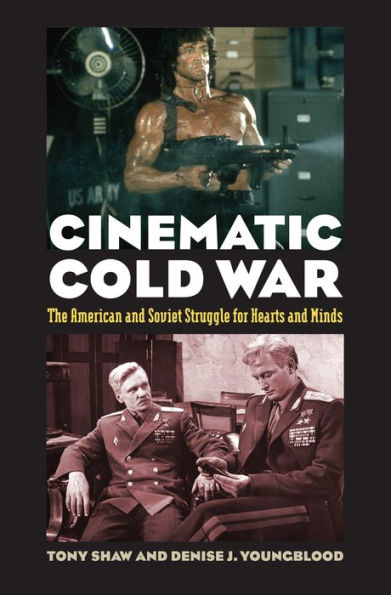"A well-researched book that contributes new ideas and insights. Shaw and Youngblood have produced a valuable addition to the literature on film, popular culture, and the Cold War."—Journal of American Culture
“A comprehensive survey of U.S. and Soviet film output in the course of the waxing and waning of the Cold War conflict. . . . A rich and rewarding undertaking in helping us grasp Cold War issues through surveillance of one of its crucial theaters.”—Cineaste
“An insightful and novel introduction to the visual culture of the Cold War.”—Slavic and East European Journal
“[A] significant contribution to Cold War studies, film studies, and comparative history. It should interest a broad range of scholars and would make an excellent text in classes on the Cold War and Cold War culture.”—Slavic Review
“Places American and Soviet Cold War cinema in direct dialogue. . . . The big contribution of [the] book is to provide a way to begin to see past the basic dichotomy of good versus evil, and propaganda versus entertainment, to a more subtle understanding of the workings of ideology.”—Russian Review
“[T]he first full-length history of American and Soviet cinemas’ important role in waging the Cold War warfare. Film scholars and historians alike will benefit from a careful reading of this path-breaking work.”—Journal of American History
“Packed with new revelations and fresh insights, this is cultural history at its finest. A ‘must read’ for anyone interested in twentieth century popular culture or the Cold War.”—Kenneth Osgood, author of Total Cold War: Eisenhower’s Secret Propaganda Battle at Home and Abroad
“Provides a balanced and rigorously researched picture of the propaganda war that was fought on screen, and contributes to a deeper understanding of a crucial, and still enigmatic, period in our recent history.”—Anna Lawton, author of Imaging Russia 2000: Film and Facts
“Bold, engaging, and thought provoking. The cinema emerges from this study as a vital window on the two combatant societies, an area of Cold War tension, and a frequent protagonist in its own right.”—Nicholas J. Cull, author of The Cold War and the United States Information Agency
“Breaks important new ground on the history and representation of the cultural Cold War. Keen analysis, striking illustrations, and illuminating pairings of the Soviet and American films are among the strengths of this book. Highly recommended.”—Walter L. Hixson, author of Parting the Curtain: Propaganda, Culture, and the Cold War and Myth to Power: National Identity and U.S. Foreign Policy
“The two most knowledgeable people in the field of Soviet and American cold war films combined their talents to produce an important book. Their work demonstrates similarities as well as difference in the two film industries. The reader of this book will learn not only about movies but also about ideologies that motivated the antagonists.”—Peter Kenez, author of Cinema and Soviet Society from the Revolution to the Death of Stalin and A History of the Soviet Union from the Beginning to the End



